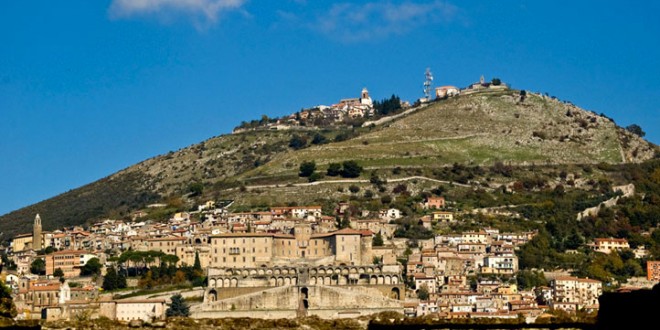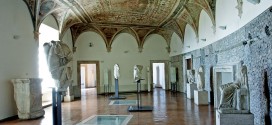The story of Palestrina during the Imperial age is less known, but to judge from the inscriptions, remains of buildings and evidences of considerable artistic level, that have been preserved to the present day, it was a period of discreet prosperity, however not comparable with the splendors of the Republican Age.
In the Augustan Age the monuments and archaeological finds indicate, however, some recovery and modest prosperity of the city. Some sources prove that imperial families had respective attention for the city of Praeneste. Verrius Flacco was native of Praeneste, the famous rhetorician, grammarian and antiquarian, who Emperor Augustus wanted as a tutor of Gaius and Lucius Caesar, his adopted children. This famous personality is mentioned by Suetonius, for having given to his hometown a monumental fountain, which he had built in the Forum near whom he exposed his reconstruction of the Roman calendar, fragments of which have been repeatedly found in Palestrina and are now exibited at Palazzo Massimo at Rome with the ancient name of Fasti Praenestini.
Tiberius had a residence at Praeneste, where among other things he recovered from a serious illness, so that, in order to show his gratitude, he gave the city the administrative status of a municipality, which included facilities for the inhabitants, including taxes. Perhaps the property of Tiberius bacome the imperial house and it was the same one upon the emperor Hadrian built his villa, definitely identifiable with the remains of ancient structures that came to light in the area of the modern cemetery.
Certainly the cult of Fortun continued to be active, although to a lesser degree than before, evidenced by the dedications given by devoted to divinity of Fortune until the 3rd century AD. The cults of Oriental origin were also introduced to Palestrina, with mistical and initiatory character, such as Cybele and Mithras, and maybe even Jupiter Dolicheno.The evidences related to these cults are exposed in the Museum. In 274 a.d. the Christian Agapito was martyred in the Amphitheatre of Palestrina, than sanctified and buried in a specially built church in southeast part of the town, on a road that leads to Valmontone. The main church of Palestrina was dadicated to Saint Agapito, consecrated in 5th century by readjustment of the structure of the Temple of Jupiter, which forms the nucleus of prenestin Cathedral where from 898 are housed the remains of the martyr.
 Archeopalestrina Percorso archeologico di Palestrina, l'antica Praeneste
Archeopalestrina Percorso archeologico di Palestrina, l'antica Praeneste

